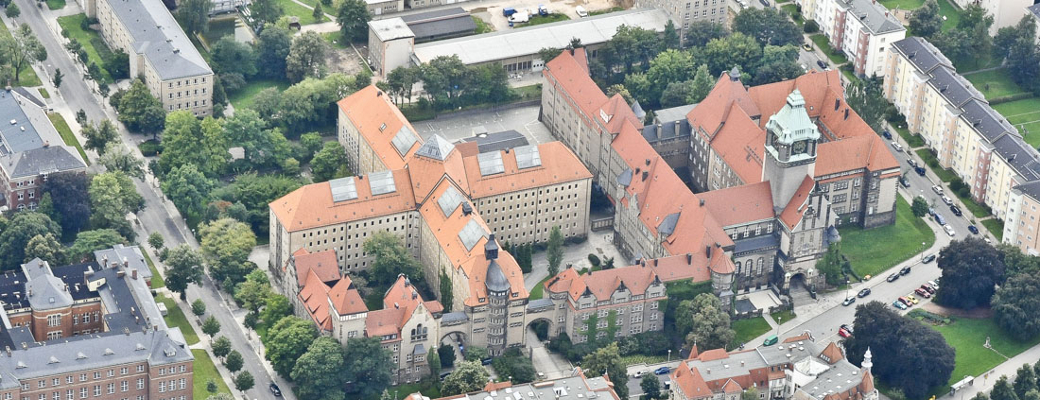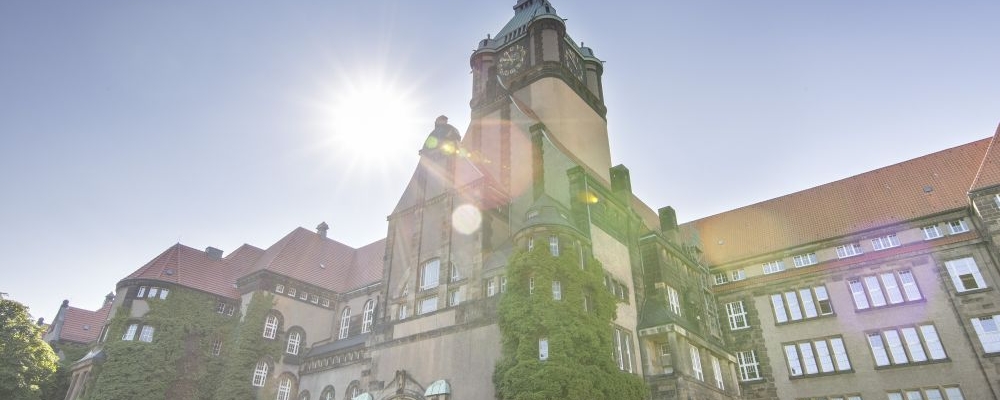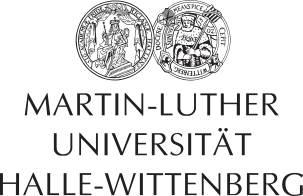Dynamic Resource Economics
Lecturer: Professor Dr Sjak Smulders (Tilburg University)
Date: September 26-28, 2023
Venue: Leipzig University, Institutsgebäude, Raum I 411, Grimmaische Straße 12, 04109 Leipzig
Registration: until September 10th, 2023 via email: sprenger@wifa.uni-leipzig.de. The course is designed for at most 20 participants.
Syllabus pdf
Time Schedule
Tuesday, September 26
9:30 a.m. – 11:00 a.m. (2 x 45 min)
Break: 30 min
11:30 a.m. – 1:00 p.m. (2 x 45 min)
Break: 90 min
2:30 p.m. – 4:00 p.m. (2 x 45 min)
Wednesday, September 27
9:30 a.m. – 11:00 a.m. (2 x 45 min)
Break: 30 min
11:30 a.m. – 1:00 p.m. (2 x 45 min)
Break: 90 min
2:30 p.m. – 4:00 p.m. (2 x 45 min)
Thursday, September 28
9:30 a.m. – 11:00 a.m. (2 x 45 min)
Break: 30 min
11:30 a.m. – 1:00 p.m. (2 x 45 min)
Break: 90 min
2:30 p.m. – 4:00 p.m. (2 x 45 min)
Format
Three days with three two-hour interactive lectures (schedule see below).
All students (also those not requiring a course grade) are expected to do the preparatory assignments before the course starts. These assignments are based on basic resource and environmental economics principles. They prepare for the more advanced material discussed in the course. They are based on three short chapters the draft of a book in preparation “Environmental and Resource Economics – A Concise Introduction” (GSZ for short).
Course grade
Based on preparatory assignments (30%) active participation during the interactive lectures (20%) and on a final project (50%). The assignment is due October 30, 2023.
Topics
This course deals with advanced topics in environmental and resource economics, with an emphasis on dynamics and growth, applied to global environmental problems including climate change.
Central themes in the course are the dynamic aspects of environmental policy and the interaction between environmental policy and technological change. The course uses natural resource theory (to study the dynamics of resource use) and growth theory (to study the link with technology and the long-run general equilibrium effects).
We try to answer questions like the following:
– What is the optimal carbon tax?
– Should green technologies be subsidized?
– Should we mainly rely on carbon taxes or on green subsidies?
– When are growth and environmental improvement compatible?
– Will we grow out of pollution? What drives the Environmental Kuznets Curve?
– How can we measure sustainability?
– How can we include environmental degradation and resource scarcity in cost-benefit analysis and measurement of the wealth of nations?
In the course we will see a mix between “fundamental robust insights” and “new challenges in the literature”, so that the course might be interesting both for the student with a general interest in the field and for the student who plans to do (theoretical) research in the field.
Required background
The course employs standard mathematical tools like calculus, optimization, optimal control, phase diagrams, differential equations, and integration.
Preliminary reading list
(*The asterisks indicate main articles)
1. Resource scarcity and sustainability
a. Non-renewable resource scarcity
– GSZ (2023) Chapter on Environmental and Resource Economics principles
– GSZ (2023) Chapter on Non-renewable resources.
– *Heal, G.M. (1976), “The relationship between price and extraction cost for a resource with a backstop technology”, Bell Journal of Economics 7 (Autumn), 371-378.
– *Anderson, S., R. Kellogg, S. Salant. 2018. Hotelling under Pressure. Journal of Political Economics 126 (3), 984-1026.
– Lin, C. and G. Wagner. 2007. “Steady state growth in a Hotelling model of resource extraction” Journal of Environmental Economics and Management 54, 68-83.
b. Circularity and critical raw resources
– *Pommeret, A., Ricci, F., & Schubert, K. (2022). Critical raw materials for the energy transition. European Economic Review, 141, 103991.
– Zhou, S., & Smulders, S. (2021). Closing the loop in a circular economy: Saving resources or suffocating innovations?. European Economic Review, 139, 103857.
c. Sustainable development and Green accounting
– GSZ (2023) Chapter on Growth and the Environment, Section on green accounting.
– *Smulders, Sjak (2008). “Green National Accounting” in S. Durlauf and L. Blume (eds) The New Palgrave Dictionary of Economics, 2nd edition, Palgrave MacMillan.
– *Dasgupta, Partha (2009). “The Welfare Economic Theory of Green National Accounts.” Environmental and Resource Economics 42, 3–38.
– *Gollier, C., & Hammitt, J. K. (2014). The long-run discount rate controversy. Annu. Rev. Resour. Econ., 6(1), 273-295.
– Drupp, M., et al. (2023). Public Consultation Response on proposed revisions to Circular A-4. https://www.regulations.gov/comment/OMB-2022-0014-0130
2. Environment and (limits to) growth
a. Limits to growth
– GSZ (2023) Chapter on Growth and the Environment
– *Tony Harding, Juan Moreno-Cruz, Martin Quaas, Wilfried Rickels, Sjak Smulders. 2023. Climate Damages in Convergence-Consistent Growth Projections. CESifo Working Paper No. 10490. https://www.cesifo.org/en/publications/2023/working-paper/climate-damages-convergence-consistent-growth-projections
– Brock, William A. and M. Scott Taylor (2005) “Economic Growth and the Environment: A review of theory and empirics” in Philippe Aghion and Steven N. Durlauf (eds) Handbook of Economic Growth, Volume 1B. Amsterdam: Elsevier.
– Groth, Christian. 2007. “A New-Growth Perspective on Non-renewable Resources” in Bretschger and Smulders (eds) Sustainable resource use and economic dynamics. Dordrecht: Springer/Kluwer. Available at http://www.econ.ku.dk/okocg/Articles%20by%20Groth/Groth_2007_SUREDbook.pdf
b. Pollution-GDP dynamics (and the Environmental Kuznets Curve)
– *Brock, William A. and M. Scott Taylor. 2010. “The Green Solow Model.” Journal of Economic Growth.
– Cherniwchan, Jevan. 2012. “Economic Growth, Industrialization, and The Environment”, Resource and Energy Economics doi:10.1016/j.reseneeco.2012.04.004
– Burke M, Hsiang SM, Miguel E (2015) Global non-linear effect of temperature on economic production. Nature 527: 235 doi: 10.1038/nature15725
c. Analytical climate/growth models
– *Dietz, S., & Venmans, F. (2019). Cumulative carbon emissions and economic policy: in search of general principles. Journal of Environmental Economics and Management, 96, 108-129.
– Golosov, Mikhail, John Hassler, Per Krusell, Aleh Tsyvinski. 2014. “Optimal Taxes on Fossil Fuel in General Equilibrium” Econometrica 82, 41-88.
– Van den Bijgaart, I., R. Gerlagh, M. Liski. 2016. A simple formula for the social cost of carbon. Journal of Environmental Economics and Management 77: 75–94.
– Van der Ploeg, F. 2018. The safe carbon budget. Climatic Change 147: 47-59.
d. Climate disasters and growth
– Tsur, Y. and A. Zemel. 2013. Dynamic and stochastic analysis of environmental and natural resources. In: Handbook of Regional Science, eds. M.M. Fischer and P. Nijkamp. Springer-Verlag, Berlin, Heidelberg, Chapter 47, pp. 929-949. doi:10.1007/978-3-642-23430-9_51.
– *Bretschger, L., & Vinogradova, A. (2019). Best policy response to environmental shocks: Applying a stochastic framework. Journal of Environmental Economics and Management, 97, 23-41.
3. (Directed) Technical Change
a. Technical change and environment
– *Requate, T. and W. Unold (2003) “Environmental policy incentives to adopt advanced abatement technology: Will the true ranking please stand up?” European Economic Review 47, 125-146.
– Goulder, L. and K. Mathai. 2000. “Optimal CO2 abatement in the presence of induced technological change”, Journal of Environmental Economics and Management 39, 1-38.
– Smulders, Sjak and Di Maria, C. and Sjak Smulders. 2017. “A Paler Shade of Green: Environmental Policy under Induced Technical Change” European Economic Review 99, 151-169.
– Grischa Perino and Till Requate. “Does more stringent environmental regulation induce or reduce technology adoption?: When the rate of technology adoption is inverted U-shaped”. Journal of Environmental Economics and Management 64(3). (2012): S. 456-467.
b. Directed Technical change
– *Acemoglu, D., P. Aghion, L. Bursztyn, and D.Hemous. 2012. “The environment and directed technical change.” American Economic Review 102, 131-166. [available at http://www.anderson.ucla.edu/faculty/leonardo.bursztyn/AABH_AER.pdf ]
– *Boyce, J. R. (2019). The paradox of value, directed technical change, and the relative abundance of the chemical elements. Resource and Energy Economics, 58, 101114.
– *Casey, G. (2022). Energy efficiency and directed technical change: implications for climate change mitigation.
– *Smulders, S., & Zhou, S. (2023). Self-fulfilling Prophecies in the Transition to Clean Technology.
– Lemoine, Derek. 2023 Innovation-Led Transitions in Energy Supply. AEJ: Macro forthcoming https://papers.ssrn.com/sol3/papers.cfm?abstract_id=2694113
– Hart, R. (2019). To everything there is a season: Carbon pricing, research subsidies, and the transition to fossil-free energy. Journal of the Association of Environmental and Resource Economists, 6(2), 349-389.
– Fried, S. (2018). Climate policy and innovation: A quantitative macroeconomic analysis. American Economic Journal: Macroeconomics, 10(1), 90-118. https://sites.google.com/site/stephiedfried/research























